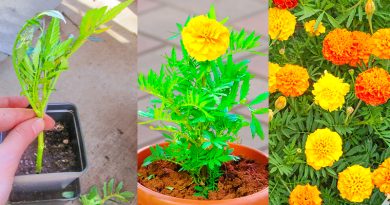Rose Rust: Symptoms and Solutions
Rose rust is caused by some several species of fungi in the Phragmidium genus. The fungi in this genus only affect roses, so we don’t need to worry about the other plants in your garden coming down with this disease. Susceptibility to rust varies widely among rose cultivars and many modern roses should be resistant to rust. Rose rust is the least serious of the common rose diseases. The fungal spores that cause rust are spread on the wind and they can survive over the winter on the soil surface, on fallen debris and even objects such as fences and stakes. The symptoms spread in early of the summer from patches of orange on the stems and leaf stalks of roses to more obvious orange speckling on the leaves.
Symptoms
Rust manifests as round, blackish-brown spots with orange, tan, or yellow centers. The leaf may turn yellow. If you turn the leaf over, you’ll find orange fungal spores. They look like orange powder clustered together. Foliage on the bottom of the plant succumbs first and then the disease moves its way up to the plant. You might also see some galls and lesions on the canes. In the spring, distorted young green stems, with large pustules of bright orange dusty spores. Yellow spots on the upper leaf surfaces, corresponding to pustules of dusty orange spores on the lower surface. In the late summer, the orange pustules turn black. Rust infected leaves may fall early.
Solution
Promptly prune out any infected stems and destroy them, along with the infected leaves. Grow roses with a lot of rooms around them so the air can circulate, and prune out any congested growth. Use a preventative copper fungicide in the spring before the overwintering spores strike. Make sure you cover all of the leaf surfaces.
38 total views, 1 views today




